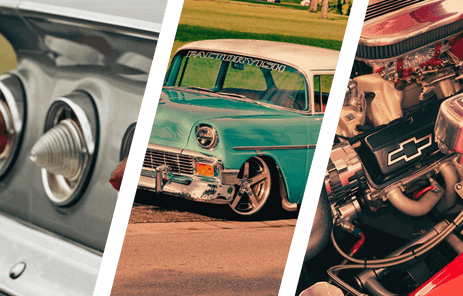
In 1968, Chevrolet’s Chevelle received a total redesign, introducing the second-generation of the model name. The Malibu continued its reign as the sales leader for Chevelle, since it carried the highest number of model options with the four-door sport sedan, two-door sport coupe and convertible, four-door sedan, and the two-seat station wagon.

When it came to engine options, the Chevelle saw some carry over from the previous year, and one all-new addition. The standard six cylinder was the 140 horsepower Turbo-Thrift 230ci engine, while the standard V8 was the new 200 horsepower Turbo-Fire 307. This new V8 was developed so that Chevrolet could comply with increasing federal emissions regulations and a consumer demand for better fuel economy. The 307 has a 3.875-inch bore (same as the 283) and 3.250-inch stroke (same as the 327). The cylinder heads used the small 1.940/1.500-inch valves, and had a smaller quench area than other small block cylinder heads. The 307ci engine was only available with a two-barrel Rochester carburetor.

The line up of optional engines available in non-Super Sport models started with the 155 horsepower Turbo-Thrift 250ci six cylinder, and then ventured into the small block V8s with the 250 horsepower Turbo-Fire 327, the 275 horsepower Turbo-Fire 327, and the 325 horsepower Turbo-Fire 327.
When it came to the Super Sport engines, the 396ci was again this year, your only option. But, it was available in three versions: the base 396ci engine delivered 325 horsepower, and the optional L34 delivered 350 horsepower. Both featured Rochester Quadrajet carburetors, a 10.25:1 compression ratio, and two-bolt-mains. The 375 horsepower L78 396ci engine was once again the big-dog option, and brought with it; 11.0:1 compression ratio, mechanical lifters, and a Holley four-barrel carburetor with an aluminum intake. While all 396ci engines had the option of receiving chrome valve covers, only the 350 and 375 horsepower versions carried an open-element air filter.
The Powerglide was the only automatic transmission available with a six cylinder or small block engines, although there were several three- and four-speed manual transmissions to choose from. All three speeds were built by Saginaw (as were some four speeds). Most four speeds however, were built by Muncie. If you had an SS, the Turbo 400 was the only automatic transmission available. A three-speed manual transmission was standard, while the M-21 and M-22 four speeds were optional.
You might also like
SEMA 2025: System X Partners With Gas Monkey Garage To Debut Synister X Chevelle
Synister X is a fully custom street bruiser that’s built around a 1,200 horsepower LT4 and a world-class Speedtech chassis.



